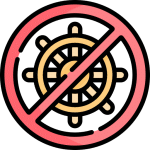Business process procurement outsourcing assists companies in managing their expenses, scaling their activities, and growing with greater adaptability.
The growing popularity of call centers has been a significant factor in enabling companies to reduce costs and simultaneously enhance the quality of service they offer to their customers.

It additionally fosters collaborative relationships between clients and their service providers.
Now increasingly adopted by small businesses as well. This approach has become particularly popular among startups, many of which are leveraging it to create distributed workforces.
Table of Contents
Definition of Procurement Outsourcing
Outsourcing encompasses the engagement of an external vendor, not affiliated with the company, to manage and deliver a specific service. This procedure involves the decision to delegate certain business functions or service responsibilities to a third-party organization.
The practice of outsourcing encompasses contracting an external supplier, separate from the company, to oversee the administration and provision of a specialized service. This approach includes the selection of a third-party firm to shoulder the responsibility for designated business functions or services.
Outsourcing offers the flexibility of adjusting resource allocation based on the fluctuating needs of the business. It provides an efficient solution for businesses to scale up their operations to meet increasing demands or scale down when the need diminishes. This adaptability is a key advantage, allowing companies to manage their resources more effectively and respond promptly to market changes without the burden of maintaining a fixed level of in-house expertise or capacity.
The goal of these providers is to achieve reduced costs by pooling together demands from various clients. This strategy enables them to negotiate lower prices effectively. Furthermore, the establishment of extensive facilities in locations where operational costs are minimal aids in decreasing the expenses associated with labor-intensive tasks like evaluating suppliers or handling Request for Quotations (RFQs). The significant scale of these providers also offers their clients the advantage of specialized knowledge, especially in areas where limited expenditure challenges the client’s ability to maintain in-house expertise in sourcing.
Through consolidating the needs of numerous customers, these organizations strive to obtain more favorable pricing. Their large-scale operations, strategically situated in areas with lower operational costs, contribute to minimizing the expenses involved in extensive and repetitive processes like supplier evaluation or the management of RFQs. Providers’ business models provide a distinct advantage to their customers by granting them access to specialized skills and expertise. This is especially advantageous in sectors where budget limitations make it challenging to maintain internal expertise in sourcing.

10 Procurement Outsourcing Pricing Models
This determination isn’t straightforward, considering the array of procurement pricing models, each offering a distinct combination of adaptability and risk-sharing attributes. Let’s embark on an insightful exploration through ten common pricing models that dominate the world of procurement outsourcing, uncovering the nuances and distinct qualities of each.

1. Fixed Price Model
Opting for the Fixed Price Model reveals a transparent and dependable pricing mechanism. Under this scheme, the outsourcing provider specifies a fixed fee for the procurement services it offers. It proves most beneficial when an organization’s procurement needs stay stable, well-defined, and resistant to frequent alterations. The fixed price model offers cost predictability and simplicity, making budgeting and financial planning more manageable. However, it may lack flexibility when dealing with dynamic procurement requirements that may evolve over time.

2. Cost-Plus Model
The Cost-Plus Methodology, alternatively labeled the cost-reimbursement approach, centers on the factual expenditures accumulated by the outsourcing provider, coupled with a predefined percentage or fee integrated into these costs. This strategy shines when tackling intricate procurement needs that are tough to gauge from the outset. It offers transparency as clients have visibility into the actual costs. It incentivizes cost control by aligning the provider’s interests with cost savings. However, clients should carefully monitor costs to prevent overruns.

3. Performance-Based Model
The Results-Oriented Framework connects the outsourcing provider’s compensation to predefined performance metrics and key performance indicators (KPIs). This framework spurs the provider to concentrate on delivering specific results that are in sync with the client’s objectives. Performance metrics could include cost savings, supplier performance, or process efficiency improvements. The performance-based model aligns the interests of both parties, fostering a results-oriented approach. However, setting and monitoring performance metrics require careful planning and management.

4. Hybrid Models
The concept of hybrid models is all about amalgamating components from multiple pricing methodologies to construct a bespoke approach. As an illustration, a hybrid model might entail a fixed charge for certain procurement tasks, along with performance-based rewards for successfully achieving cost reductions. This versatility is invaluable in tackling complex procurement scenarios that defy a one-size-fits-all pricing model.

5. Staffing Model
In the Staffing Model, the client pays the outsourcing provider based on the number of staff members dedicated to the procurement function. This model offers scalability, allowing organizations to adjust the team size as needed. It is suitable for scenarios where procurement needs may fluctuate, and additional resources can be rapidly deployed. However, it may not directly tie costs to specific procurement outcomes, making cost control more challenging.

6. Dedicated Team Model
This approach proves particularly advantageous for organizations grappling with intricate procurement needs that call for specialized skills. However, it’s important to acknowledge that the exclusive team model might come with a higher price tag, reflecting its exclusive and expertise-driven approach.

7. Time and Material (T&M) Pricing Model
This model presents flexibility, rendering it a strong choice for projects with evolving requirements. Nevertheless, it necessitates careful monitoring to prevent budget overruns, highlighting the significance of effective project management.

8. Value-Based Pricing Model
This model encourages innovation and a results-driven approach, as providers are incentivized to generate substantial value for the client. Implementing a robust mechanism to measure and quantify value is critical for the success of this model.

9. Retainer-Based Pricing Model
In the Retainer-Based Pricing Model, the client pays a fixed fee to retain the services of the outsourcing provider, regardless of the volume of procurement activities. This model offers stability and ensures that the provider is readily available when needed. However, it may not align costs with actual usage, making it more suitable for organizations with consistent but not necessarily high procurement activity.

In the Shared Risk-Reward Pricing Model, the client and the outsourcing provider team up to shoulder the challenges and benefits tied to procurement outcomes. This approach nurtures a spirit of cooperation and shared triumph, as both sides are deeply invested in attaining favorable results. Clear risk-sharing agreements and performance metrics are essential for the effectiveness of this model.

Risks and Challenges in Procurement Outsourcing Pricing
This is some common issues to consider include:

Loss of Control
The engagement in procurement outsourcing encompasses delegating critical business functions, leading to a partial release of control. This element can evoke apprehension, particularly when it pertains to areas like quality assurance, regulatory conformity, or pivotal strategic choices. The tug-of-war between operational efficiency and the need for oversight presents a substantial decision-making challenge for enterprises exploring procurement outsourcing. Balancing control with external expertise becomes a pivotal factor in fully harnessing the arrangement’s potential.

Data Security and Confidentiality
Within the domain of procurement operations, the management of sensitive data is an ongoing responsibility, involving critical supplier contracts and confidential pricing details. Safeguarding this proprietary information and preserving data security and confidentiality are fundamental throughout the outsourcing process. The consequences of a data breach or inadvertent disclosure within the procurement sector can be substantial, leading to strained supplier relationships, financial impacts, and a compromised competitive position. Hence, meticulous attention to data security procedures, stringent confidentiality measures, and robust encryption methods is imperative when commencing procurement outsourcing ventures.

Vendor Lock-In
Opting for an ill-fitting outsourcing partner or pricing structure can inadvertently result in a state of vendor entrenchment, a situation where the organization becomes tightly bound to the chosen provider or pricing model. This particular circumstance could create substantial obstacles, complicating the transition to alternative service providers or the internalization of procurement operations. As a result, it’s vital for businesses to be discerning in their selection process, making certain that the chosen outsourcing partner and pricing framework harmonize effectively with their long-range strategic objectives to prevent the potential entanglement of vendor lock-in.

Hidden Costs
Exploring pricing models in depth is essential because they may hide unexpected costs that could take a business by surprise. These hidden expenses might surface as penalties for falling short of predefined performance benchmarks or fees for making necessary changes to the outsourcing agreement. Thus, it is crucial to fully understand the entire cost structure when making prudent decisions to avoid unforeseen financial implications that could affect the overall success of your procurement outsourcing strategy.

Contract Management
Effectively managing outsourcing contracts entails navigating a multifaceted landscape that can often prove intricate and demanding. Clients must meticulously craft contracts that are not only well-drafted but also robust enough to withstand the dynamic nature of business relationships with outsourcing providers. Beyond the drafting phase, vigilant and proactive contract monitoring becomes paramount. This involves continuous oversight, adherence to service level agreements (SLAs), and an agile approach to adapt to changing circumstances. Ensuring contractual compliance and alignment with evolving business objectives is essential in safeguarding the success of the outsourcing partnership.

Cultural Fit
The synergy between the client and the outsourcing provider’s cultures is pivotal for fostering fruitful collaboration. Variances in cultural norms and work approaches can pose significant hurdles that demand adept management. Compatibility in terms of values, communication patterns, and organizational cultures serves as the cornerstone for establishing trust, enabling a harmonious partnership, and guaranteeing the outsourcing endeavor flourishes within a framework of mutual comprehension and regard.
Choose the Best Outsourcing Pricing Model for Your Business
In the process of determining the procurement outsourcing pricing model, it depends on the results of the appropriate analysis, needs and risks of your company or organization. Therefore, you need to be careful to determine it. Here are some important steps that can help you make this decision:
Assess Your Procurement Needs
Commence the decision-making process by initiating a thorough evaluation of your company’s procurement prerequisites. This entails a holistic examination encompassing factors including the scale of procurement, intricacies involved, and the strategic significance it holds within your organizational framework.
Define Clear Objectives
When examining the option of outsourcing procurement services, it becomes critical to identify your central intentions. Is your main goal to drive significant cost reductions in your procurement procedures, cultivate vital supplier relationships, or enhance the overall efficiency and efficacy of your procurement activities? Clearly defining these central objectives will not only direct your decision-making but also guarantee that your chosen procurement outsourcing approach perfectly matches your organization’s distinct objectives and priorities.

Evaluate Risk Tolerance
Carefully reviewing your company’s risks in decision making is very important. Moreover, this is related to outsourcing service providers or third parties. This assessment ensures that you are willing to bear all the risks when partnering with this third party. Selection of pricing models and stability and predictions for the prices to be covered. Understanding this is very important to be able to manage your and your company’s financial targets, as well as planning the funds you will spend.
Analyze Pricing Models
Take a deep dive into the array of pricing models at your disposal, meticulously assessing their compatibility with your unique procurement requirements. Delve into the intricacies of each model, evaluating their capacity to offer cost predictability, align seamlessly with your overarching objectives, and provide the essential flexibility required to adapt to the ever-changing landscape of procurement. It is essential to scrutinize how each pricing model resonates with your organization’s specific goals and constraints, ensuring that the chosen model harmonizes effectively with your strategic vision for procurement optimization.
Seek Expert Advice
Involving consultants or experts in this field, or simply seeking advice from experienced colleagues or organizations/companies is a very necessary step in the decision-making process. The insights and advice they offer can provide a deeper understanding of the complex world of outsourcing. Apart from that, it can help you navigate further with the understanding you get. With their expertise and insight, this can help you and the company in the future and determine strategic steps.
Negotiate Clear Contracts
Ensuring a mutually beneficial partnership in outsourcing necessitates the establishment of well-defined parameters in your contracts. These agreements should contain meticulous details regarding pricing structures, service level expectations, measurable performance criteria, and efficient dispute resolution methods. In essence, transparency serves as the linchpin that nurtures trust, aligns expectations, and guarantees the smooth operation of your outsourcing projects.
Monitor and Adapt
Maintaining a watchful eye over your outsourcing partnership’s performance is absolutely crucial. Being flexible and ready to adapt to changing situations is essential. Regular and comprehensive assessments, conducted through periodic reviews, not only aid in maximizing the effectiveness of the collaboration but also guarantee its continued alignment with your evolving business goals and external variables.

Frequently Asked Questions
What is the best outsourcing model?
When you have a precisely defined project and are focused on cost-effectiveness, project-based outsourcing becomes a compelling choice. The dedicated team model can offer the perfect blend of control and adaptability, making it an ideal fit for long-term projects that demand specialized expertise.
What is cost plus pricing outsourcing?
Cost-plus pricing, as a pricing framework, entails billing clients for the real expenses linked to IT service provision, alongside a supplementary markup or profit margin. This pricing model sees frequent use in the realm of IT outsourcing, where companies enlist the services of external vendors.
How do you calculate cost-based pricing?
In many companies, cost plus pricing includes billing customers for the actual costs associated with IT services and additional profit margins. This agreement is often used in IT outsourcing agreements
What is outsourcing pricing?
As an outsourcing customer, you will pay a fixed price for two or more IT services/products which are bundled together. By opting for this pricing model, you will be paying less for two or more outsourcing services.
Is outsourcing a fixed cost?
In outsourcing to vendors for particular services, you shift the fixed costs away from yourself and toward those vendors. Your costs become variable—you only pay for the work you need.
